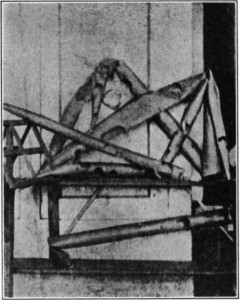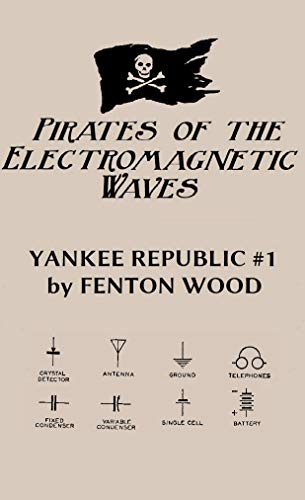
I first heard about the “Tin Disease” when I was reading Isaac Asimov’s science essays in junior high school. He described how the tin organ pipes in St. Petersburg mysteriously lost their shine during a cold winter and transformed into a crumbly gray powder. Thus (Asimov said), was it discovered that tin possesses two “allotropes” or atomic crystalline configurations. For instance, diamond and graphite are allotropes of carbon. White or beta tin is a lustrous metal. When cooled, it transitions gray or alpha tin, the crumbly powder described by Asimov.
Asimov was such a polymath – opining authoritatively on subjects ranging from Shakespeare and the Bible to Astronomy and Particle Physics that it’s easy to forget his Ph.D. was in biochemistry. Clearly, if there were any realm in which his pronouncements were most worth of respect, chemistry would be it. And my professor related the same story of the discovery of tin’s metastable behavior in my freshman chemistry class at Purdue. Whether called the tin pest, disease, blight, or plague, I filed that particular tin factoid away and thought little of it for decades.
Fast forward twenty years. Not long after my girls were born, I would read to them while they were falling asleep. They couldn’t understand what I was saying, so I wanted to pick reading matter that would be interesting to me and conceptually “dense” enough to be engaging to me even at the relatively slow pace of reading aloud. Aristotle proved perfect for the task.
One of Aristotle’s books, On Marvelous Things Heard (see collected works Vol. 2), presents a strange and wonderful collection of factoids. Clearly Aristotle does not attest to the veracity of these factoids, he merely passes them on second-hand as being of potential value. Some report interesting phenomena we now understand are accurate but were apparently outside Aristotle’s experience.
59 – Now in the same place there is a cave which is called the pretty cave. In this pillars have been formed by congelation from certain drippings of water: and this is evident at the point where they join the ground, for the narrowest part is there.
[Stalactites grew long enough to make columns.]168 – The rivers Rhine and Danube flow towards the north, one passing the Germans, the other the Paeonians. In the summer they have a navigable stream, but in the winter they are congealed from the cold, and form a plain over which men ride. [The rivers freeze over in winter.]
That last one is indicative of the skepticism faced by Pytheas about the time Aristotle died (320 B.C.) when he presented his seemingly outlandish tales of having sailed out of the Mediterranean Sea, past the pillars of Hercules to the unknown seas of the north and encountered icebergs. That saga, brilliantly chronicled by Barry Cunliffe in The Extraordinary Voyage of Pytheas the Greek, will have to await another day’s post for the telling, however.
Others of Aristotle’s collected “Marvelous Things Heard” seem offbeat, or nonsensical:
149 – In Mesopotamia, a region of Syria, and at Istrus, they say that there are certain little snakes, which do not bite the people of the country, but do great injury to strangers.
170 – In Euboea there are said to be two rivers; the sheep that drink from one of them becomes white – it is called Cerbes; the other is the Neleus, which makes them black.
One item caught my particular attention:
50 – They say that Celtic tin melts much more quickly than lead. A proof of it’s fusibility is that it is believed to melt even in water: at any rate, it seems , it stains quickly. Now it melts in cold also, when the weather is frosty, because, as they say, the hot substance inherent in it is by reason of its weakness shut up and compressed within. [emphasis added]
Tin “melting” in cold? Could it be that Aristotle was passing on a second hand story of the tin disease nearly two millennia earlier than the “discovery” related to me by Asimov? And I discovered something overlooked by generations of chemists who did not peruse Aristotle in the same detail? Such things do happen occasionally. In 1987 for instance, University of Chicago Physics student Robert Garisto found a math error in Isaac Newton’s Principia that had apparently been undetected since the seventeenth century.
Alas – I was not the first hound down this trail. Writing in 1913, James H. Watson reports that Professor Cohen of Utrecht not only characterized the allotropic behavior of tin, but also cited the same passage from Aristotle. The full article is available thanks to the efforts of the folks at Google:
Also in modern speculation, the tin disease may have been a factor in Napoleon’s disastrous Russian campaign. Such is the thesis of an interesting looking book I have not yet read: Penny Le Couteur’s and Jay Burreson’s Napoleon’s Buttons: How 17 Molecules Changed History.
The properties of tin are a matter that either is or ought to be important to every electrical engineer. Tin is the mortar that holds together every electronic device because it is usually the primary constituent of solder. John R. Barnes provides an extensive bibliography.
UPDATE: see my post Napoleon’s Buttons – How Chemistry Influenced History.




2 thoughts on “The Tin Disease”